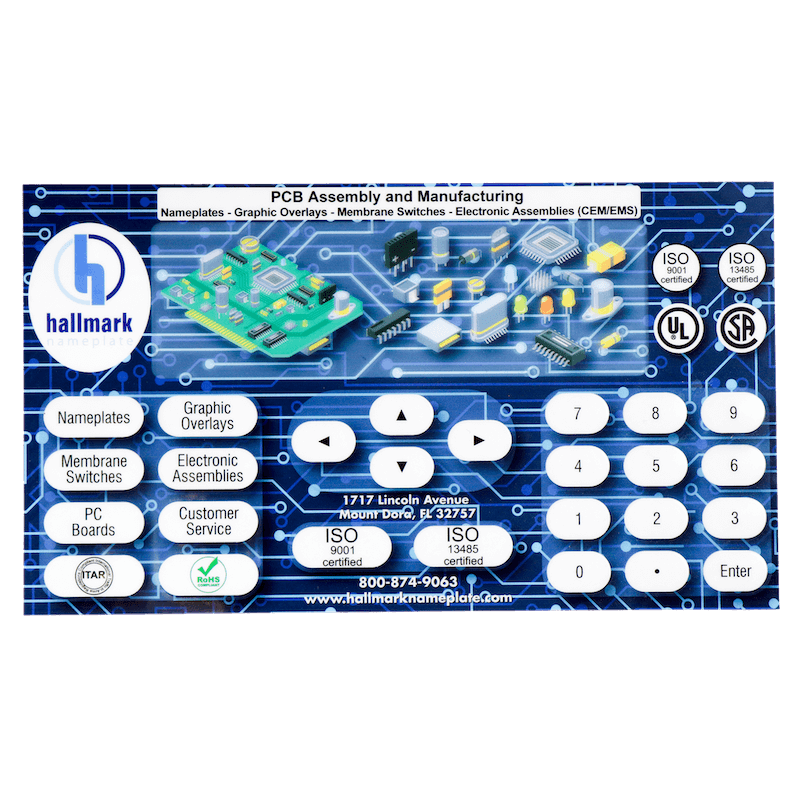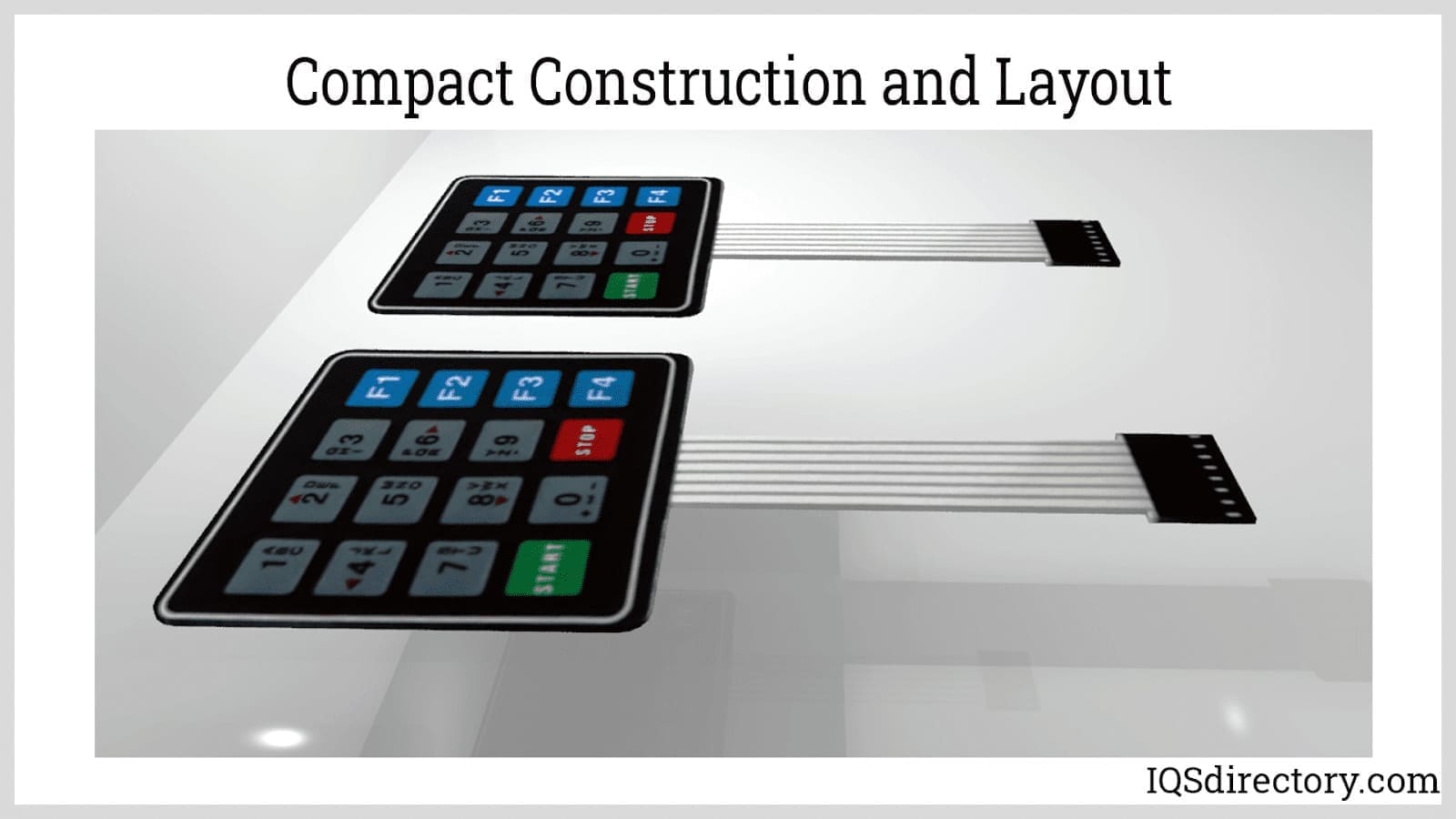Why Membrane Switches Are the Perfect Solution for Industrial Equipment
Why Membrane Switches Are the Perfect Solution for Industrial Equipment
Blog Article
Recognizing the Relevance of Membrane Switches in Individual User Interfaces
Membrane buttons are integral parts in the style of effective user interfaces, facilitating not just functionality yet additionally enhancing visual allure and customer communication. Their one-of-a-kind attributes, such as resistance to customizable layouts and environmental factors, make them ideal for a diverse selection of applications throughout numerous industries. As we check out the various advantages and future patterns related to Membrane innovation, it comes to be clear that these buttons are greater than just components; they represent a convergence of development and usefulness. The effects of this modern technology on user experience are worth taking a look at additionally.
What Are Membrane Switches?

The spacer layer, which contains sticky residential or commercial properties, permits for the splitting up of the circuit layer from the overlay, ensuring that the switch remains in a non-activated state until pushed. When stress is put on the overlay, it compresses the spacer layer, linking the space and completing the circuit in the underlying layer. This design not just reduces the physical space needed for conventional mechanical switches yet likewise improves the toughness of the device, as Membrane buttons are generally immune to dirt, moisture, and various other ecological variables.
Typically discovered in applications varying from consumer electronics to medical gadgets, Membrane switches are important to modern-day technology, offering a easy to use and efficient interface that lines up with modern design requirements.
Advantages of Membrane Buttons
While various button modern technologies exist, Membrane Switches offer distinct advantages that make them specifically desirable in different applications. One of the primary benefits of Membrane switches is their compact style, which allows for space-saving applications in devices where realty is limited. Their thin account not just boosts aesthetic allure but likewise facilitates light-weight building and construction.
One more substantial advantage is their resistance to ecological aspects. Membrane switches are generally sealed against wetness, dust, and impurities, making them perfect for usage popular atmospheres, such as medical devices and commercial equipment. This durability extends the life-span of the switch, reducing upkeep expenses and enhancing reliability.
In addition, Membrane buttons can be customized to meet particular style demands, integrating special graphics and shades that improve user interaction. Their responsive feedback choices can additionally be tailored to give a gratifying customer experience. Furthermore, Membrane buttons are affordable, specifically in high-volume applications, as they can be produced successfully.
Applications in Various Industries

In the consumer electronics field, Membrane buttons are prevalent in tools such as microwaves, cleaning devices, and remote controls. Their responsive responses and aesthetic choices enhance individual experience while giving a streamlined, contemporary appearance. In addition, vehicle producers make use of Membrane switches in dashboard controls and infotainment systems, where space is limited, and user engagement is critical.
Furthermore, the commercial field leverages Membrane switches in control panels for machinery and devices, enabling instinctive procedure in usually severe settings. Their resistance to chemicals and dampness guarantees durability and integrity in these applications. On the whole, the adaptability of Membrane Switches adds dramatically to their prevalent usage, making them vital in various technological domains.
Style Considerations for Membrane Buttons

When designing Membrane switches, a number of key factors to consider have to be thought about to make certain optimal functionality and individual experience. To start with, the option of products is crucial; selecting long lasting, top notch substrates can boost the button's durability and resistance to ecological elements such as moisture and temperature changes.
Secondly, the style of the graphic overlay need to focus on quality and ease of usage. Symbols and message need to be understandable, and the layout should facilitate intuitive interaction (membrane switches). Additionally, tactile comments is necessary; incorporating a responsive linked here dome or other mechanisms can improve the customer experience by giving physical confirmation of activation
Another essential element is the button's electrical efficiency. Developers need to make certain that the conductive traces are effectively designed to decrease resistance and avoid signal interference. This involves analyzing the required actuation force and guaranteeing compatibility with the electronic parts they will interface with.

Future Trends in Membrane Innovation
As innovation proceeds to advance, Membrane buttons are positioned to advance substantially, driven by innovations in products and manufacturing strategies. One arising pattern is the incorporation of innovative materials, such as conductive inks and flexible substrates, which boost toughness and lower the total weight of Membrane buttons. These products not only boost the responsive feedback yet likewise permit the layout of switches that can withstand harsher ecological problems.
Furthermore, the combination of touch-sensitive technologies is transforming typical Membrane Switches right into even more interactive interface. Capacitive touch sensing units embedded within Membrane switch panels can provide a much more responsive and instinctive user experience, straightening official statement with the growing need for smooth, contemporary designs in customer electronics.
In addition, improvements in printing techniques, such as digital and 3D printing, enable quick prototyping and customization of Membrane buttons. This versatility enables manufacturers to respond quicker to market needs and consumer preferences.
Finally, sustainability is becoming a considerable focus, with makers discovering environment-friendly materials and processes. As these patterns unravel, the future of Membrane innovation guarantees improved functionality, aesthetic charm, and ecological responsibility, strengthening their function in advanced user interfaces throughout different sectors.
Conclusion
In final thought, Membrane Switches stand for an important component in the style of individual interfaces, incorporating functionality with visual versatility. As innovations in technology continue, the evolution of Membrane buttons is expected to more fine-tune customer interfaces, driving innovation and enhancing usability in a progressively complex technical landscape.
Membrane buttons are important components in the layout of effective customer interfaces, promoting not only performance yet more tips here likewise improving visual allure and customer communication.Membrane Switches serve as an essential component in different individual interfaces, helping with a smooth communication in between users and electronic gadgets.While various button technologies exist, Membrane Switches offer distinctive benefits that make them particularly preferable in numerous applications.In addition, Membrane buttons can be customized to satisfy particular layout needs, including unique graphics and colors that improve individual interaction.In verdict, Membrane Switches stand for an essential element in the layout of customer interfaces, incorporating capability with visual flexibility.
Report this page